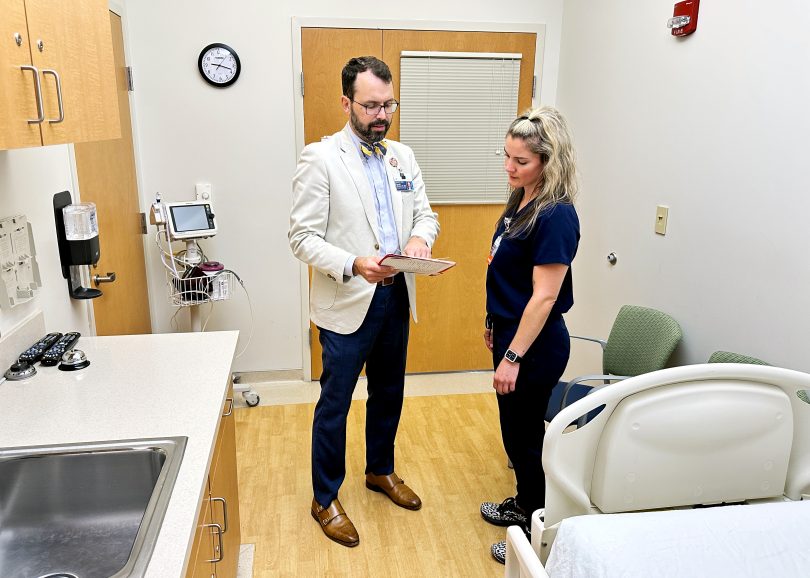“Neurology and cancer have deeply impacted my life for as long as I can remember,” said Wallace, an assistant professor in the Division of Hematology/Oncology at the Medical College of Georgia. “I love doing this job, everything about it is just fascinating to me.”
Leptomeningeal disease is a type of metastatic cancer. The leptomeninges are two layers of tissue covering the brain and spinal cord. They are the innermost layers, which cover the surface of the brain, blood vessels, and cerebrospinal fluid. Five to eight percent of people with cancer will develop leptomeningeal disease. It is estimated that of the ~54,000 Georgians diagnosed each year with invasive cancer, as many as 4,000 are at risk of developing leptomeningeal disease. They know roughly how cancer gets there, but they do not know why. However, it is known that leptomeningeal disease is life-threatening. Without treatment, most patients will only live another six to eight weeks. With treatment, people can live well for months, and in some cases years.
“That 6-12 months is the next graduation, the next wedding, the next birth of a child… at the end of the day I think we are all just fighting for time to spend with our loved ones. So, we should do something. Treatment is not that bad; it is quite tolerable,” Wallace said.
Symptoms that are possible with leptomeningeal disease are, visual changes, stiff neck, trouble walking, headache that worsens when lying down, urinary/bowel incontinence, and memory issues. Wallace is concerned when he sees a patient with neuropathies or new neurological symptoms that do not a patient’s known disease. When he hears or sees these sorts of symptoms, he sends patients to get tested. He thinks leptomeningeal disease is easily missed because most patients will already have had cancer for months or years. For these patients, symptoms may be blamed on treatment rather than cancer in the leptomeningeal space.
“If you have problems with one nerve here and one nerve over there, and I cannot connect the two… that really makes me nervous. Something is going on in a more global space than would otherwise be indicated in, say, a tumor that was sitting in the visual cortex and you cannot see well,” he said.
There are treatment options for patients diagnosed with leptomeningeal disease. The first step is to confirm the diagnosis. Contrasted MRI of the brain and spinal cord is used to see if there is anything suspicious or out of the ordinary. MRI is followed by two lumbar punctures to see if there is cancer in the cerebrospinal fluid. Once the diagnosis is confirmed, the next step would be radiation of the brain and possibly the spinal cord. Finally, patients should talk with a neurosurgeon to discuss placement of an Ommaya reservoir. An Ommaya reservoir is a special port which allows access to the cerebrospinal fluid in the brain. It sits under the hairline on the scalp and is an easier way to give chemotherapy, evaluate spinal fluid, and decrease intracranial pressure.
Wallace uses a variety of medications which are given through the Ommaya reservoir to treat leptomeningeal disease. The choice of medication depends on the type of cancer, specific mutations in the cancer, and most importantly, the ability of the patient to tolerate therapy. Patients start off going weekly for treatment for a few months. If they see good results, they can start going every other week, then monthly.
There have been major breakthroughs for drugs in recent years which may be able treat leptomeningeal disease. He is excited about their potential and is working to create clinical trials at the Georgia Cancer Center to assess that potential. As people live longer with cancer, the likelihood of a cancer survivor being diagnosed with leptomeningeal disease also increases.
“I think there is great potential to make big strides in survival and quality of life for patients with leptomeningeal disease,” he said.
If you are concerned about leptomeningeal disease, you can schedule an appointment with Wallace and his team by calling 706-721-2505


